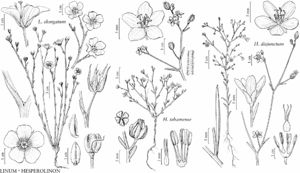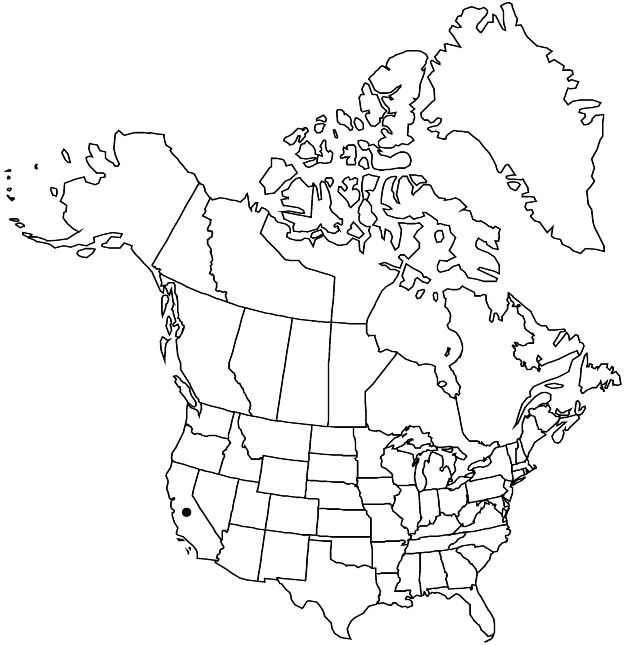Hesperolinon tehamense
Univ. Calif. Publ. Bot. 32: 298, figs. 4f, 5w, 10g, 14f, 20. 1961.
Herbs, (2–)20–35(–50) cm, usually hoary throughout, hairs microscopic, straight, stiff, white, erect, sometimes glabrous except on stems immediately distal to nodes; branches from distal 1/3 to 2/3 of plant, alternate, widely spreading. Leaves alternate; stipular glands only at proximal nodes, inconspicuous, or absent; blade ± linear, 10–20(–30) × 1–2(–3) mm, base flat, not clasping, margins without stalked glands. Inflorescences: cymes mostly monochasial (scorpioid or helicoid), open, internodes long, flowers widely scattered; bract margins without prominent glands. Pedicels 0.5–2(–3) mm, to 6 mm in fruit, spreading at 45° angle, not bent at apex. Flowers: sepals erect, ± spreading at tip, lanceolate, 2–3 mm, equal, marginal glands tiny, surfaces glabrous or with hoary microscopic puberulence; petals widely spreading, distal 1/2 ± recurved, light or bright yellow, veins sometimes ± red, obovate, 3.5–5.5 mm, apex often deeply notched; cup yellow, rim hairy, rim with petal attachment in shallow sinus; stamens exserted; filaments 3–4 mm; anthers yellow, dehisced anthers 1.2–1.4 mm; ovary chambers 6; styles 3, yellow, 3.5–4.5(–5) mm, exserted. 2n = 34.
Phenology: Flowering May–Jul.
Habitat: Dry rocky hillsides in chaparral in Pinus sabiniana and Quercus douglasii woodlands, serpentine soils.
Elevation: 100–1000 m.
Discussion
Hesperolinon tehamense is found in the north and central Inner North Coast Ranges in Glenn and Tehama counties. Its range overlaps that of H. disjunctum, from which it differs in having petals bright yellow-tinged with orange or red rather than petals white, pink, or lavendar.
Selected References
None.

